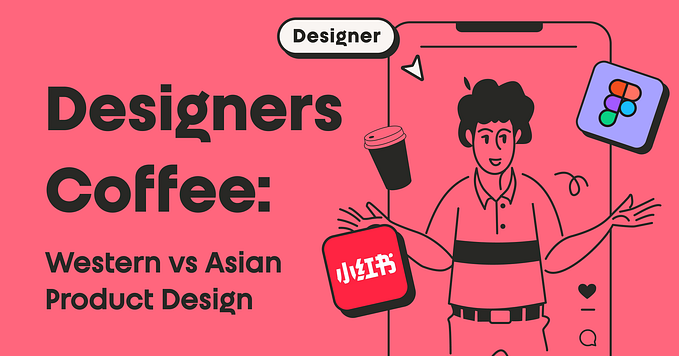Six workshops for all content designers to try
When you want to get your product teams thinking more about content, or need to foster good relationships and collaboration, a workshop can be super-helpful.

Here are a few workshops I think every content designer needs to have up their sleeve:
1 The pre-mortem
I give full credit to Peter Winchester for introducing me to this one a few years back. It’s a great way to kick-off a project and find out what team members are worried about. But more than that, it’s a great way to pre-empt and mitigate disaster and I’ve used it several times since to great effect.
Why’s it so good for content designers?
This workshop is the perfect way to raise concerns about not being involved at the right times, and highlight the things that could hamper your work, such as poor collaboration. But it also helps you find out what product designers or researchers might be worried about, and often you can help alleviate their concerns too by outlining better ways of working upfront.
When to use it
At the start of a new project or with a new team.
How to run a pre-mortem
For this workshop, you project yourselves into the future, and think about all the things that could have gone wrong, and why. Once you’ve brainstormed these, you group to spot themes. In the second part, you come up with ways to mitigate the bad outcomes. You’ll need a large wall space, some Post-Its, and 30–45 minutes of people’s time. See Atlassian’s full breakdown of their pre-mortem workshop.

2 Empathy mapping
This is a perfect way to put yourself into the user’s shoes to help define the key messages and the tone your content might need to take.
Why’s it so good for content designers?
When completed as a team activity, everyone has a better understanding of the user which will help you create a much more empathetic experience. It will also help your team see just how much rigour goes into helping you define the tone and key messages for your content work.
When to use it
Ideally do this after your formative user research — you’ll have all the insights from your discovery work and it’s a great way to summarise your findings.
How to do empathy mapping
There are many different empathy map templates, which all break down into sections of your user’s experience — what are they doing, thinking, seeing, saying, hearing or feeling? Pick a template like this one which is built into Miro, or draw one up in a large space. Spend some time as a team noting down all you know about your user in each of these segments, before sharing and discussing as a group. Then spend some time thinking about what this might mean for the experience you’ll be designing. For example, if your user is feeling anxious, you might respond with a calming and reassuring design. Once you’ve agreed the principles for the experience you want to create, make sure they’re documented somewhere to refer back to.
Read more about empathy mapping.
3 Experience mapping
Journey mapping is often used to map the customer’s journey through your site or app. But used more holistically, you can also use it to connect all the typical touchpoints with your brand and identify pain points across the experience.
Why’s it so good for content designers?
If you find there are silos across your organisation, and know that you need to work more closely with teams like marketing, suggesting a mapping workshop brings everyone together and helps to spot content inconsistencies.
When to use it
Use it at any time to evaluate your user experience, but especially when looking at new messaging or product launches.
How to run a mapping workshop
You’ll need a large physical or virtual space to create your map. Ask each participant to come to the workshop with examples of content from their area — such as marketing collateral, service emails, and even call scripts. Start with the broadest context (for example a Google search or viewing a display ad). Move through the typical phases your user would then go through, giving each phase a name (such as research, purchase, servicing etc). Add the content examples under each header. You may want to create swim lanes for each ‘channel’.
Then take time to look back through the journey with a whole bunch of Post-Its. Ask the team to note down inconsistencies, errors, or any general content issues that might be causing problems for customers.
Discuss how you might resolve these issues and create some actions the group can take away.

4 Conversational design
Encouraging content-first design doesn’t have to be as painful as you think. Suggest this workshop with your product designers for a new ideation technique that’s fun and insightful.
Why’s it so good for content designers?
When you want to gently nudge your product designers away from sketching out empty boxes in ideation sessions, and demonstrate the importance of content-led design, this workshop is your perfect solution.
When to use it
Before you jump into sketching out solution ideas.
How to run a conversational design session
Add some extra time to your team ideation sessions and suggest giving this a try. You’ll need to have your user goal and business goals, and a summary of the user needs you’ve identified through research. Break the group into pairs – one person plays the business, and one plays the customer. The idea is to have a natural conversation that leads each person to their goal. The conversation is documented, then summarised. This summary can then be used to go into your usual solution sketching. See the full workshop.
5 Stakeholder mapping
With a bit of pre-planning, you can identify the stakeholders you might need to spend extra effort with upfront, saving many headaches later on.
Why’s it so good for content designers?
Sometimes it can feel as if most of our job is stakeholder management, but that doesn’t need to be the case. Often we just need to open up communication early, and keep it regular. This workshop can help the team plan this in advance.
When to use it
At the start of any new initiative or when working with a new group of stakeholders.
How to run stakeholder mapping
Get your team together for around 45 minutes, and draw out the following grid on a large space. Spend some time mapping your key stakeholders where you think they belong and why.

Next think about how you need to manage the high-interest stakeholders. How will you communicate progress and outcomes, and how often? Document any actions that come out of the session. Read more about stakeholder mapping.
6 Cover story
For a fun workshop that helps with alignment, this simple workshop can be run in a matter of minutes.
Why’s it so good for content designers?
When it comes to content, we know that not every bit of information has the same level of importance, but stakeholders can often disagree. This exercise helps determine your message hierarchy, in a way that’s creative and helps them think about what really is the best way to sell a product.
When to use it
When you really need to nail the product proposition and key messages.
How to run a cover story workshop
Book in some time with the people that need to be involved. They’ll all need a piece of paper and a pen.
Talk them through a magazine cover — it usually has a title (or masthead), an image to attract people to it, a headline or selling line (the main marketing point), and a side bar of what you could expect to find inside. It may also feature a quote or two.

Ask the participants to imagine your product, site or app, is a magazine, and give them 5–10 minutes to sketch their cover. What does it say? What are the key selling points? Compare the sketches, and see how aligned they are.
If necessary, you might need to arrange time to discuss any big misalignments, but you should come out of the session with some good ideas to explore further as messaging options.
The first time you initiate a workshop, it can feel daunting. The most important things to remember are:
- provide clear instructions (breaking them down into steps on a simple slide can help)
- be strict on time-keeping
It’s easy to run over when there’s a lot of debate and not have time to finish the workshop. Keep people on track and suggest any big debates are picked up at a later date.
Why you need a content team and how to build one is out now on Amazon. Rachel also curates and hosts the Lead with Tempo conference. Get your ticket at www.leadwithtempo.com.







